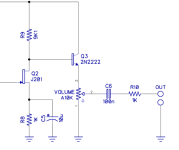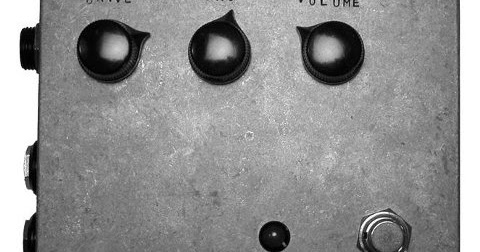iamjackslackof
Well-known member
Hi all,
I have some questions about the role of the 2N2222 BJT at the output of the Chop Shop schematic. It seems to me after some research that it's functioning as an output buffer.
My first question is about how and why it was added. What was the reasoning behind including it in the circuit? I get the idea of using buffers in general, but most similar ODs don't include one, so why did they here? Is it because they can and it's a nice thing to do, or is it because of something about the rest of the circuit that necessitated it?
Second, how is it affecting the sound? I don't have the time to breadboard it and just chop it off (heh) from the end and listen for changes, so does anyone know what audible effect there would be, if any? I would expect none if it's a simple transparent buffer, as it seems to be.
Third, if I wanted to add one to a circuit, what considerations do I need to take to pick part values? Seems like I could just get a common NPN, hook it up to VCC and the signal input and be mostly there. The emitter resistor needs to be considered for sure, and seems to be the A10K volume pot. Not sure what would happen with different/bigger pots. I'm also not sure if C6 or R10 are related/impact the buffer, or how their values would be chosen.
Thanks!

I have some questions about the role of the 2N2222 BJT at the output of the Chop Shop schematic. It seems to me after some research that it's functioning as an output buffer.
My first question is about how and why it was added. What was the reasoning behind including it in the circuit? I get the idea of using buffers in general, but most similar ODs don't include one, so why did they here? Is it because they can and it's a nice thing to do, or is it because of something about the rest of the circuit that necessitated it?
Second, how is it affecting the sound? I don't have the time to breadboard it and just chop it off (heh) from the end and listen for changes, so does anyone know what audible effect there would be, if any? I would expect none if it's a simple transparent buffer, as it seems to be.
Third, if I wanted to add one to a circuit, what considerations do I need to take to pick part values? Seems like I could just get a common NPN, hook it up to VCC and the signal input and be mostly there. The emitter resistor needs to be considered for sure, and seems to be the A10K volume pot. Not sure what would happen with different/bigger pots. I'm also not sure if C6 or R10 are related/impact the buffer, or how their values would be chosen.
Thanks!



